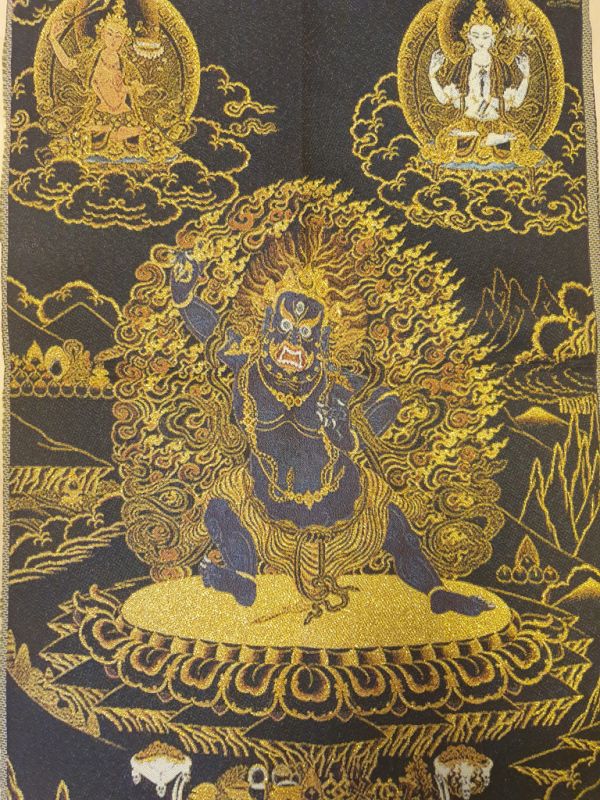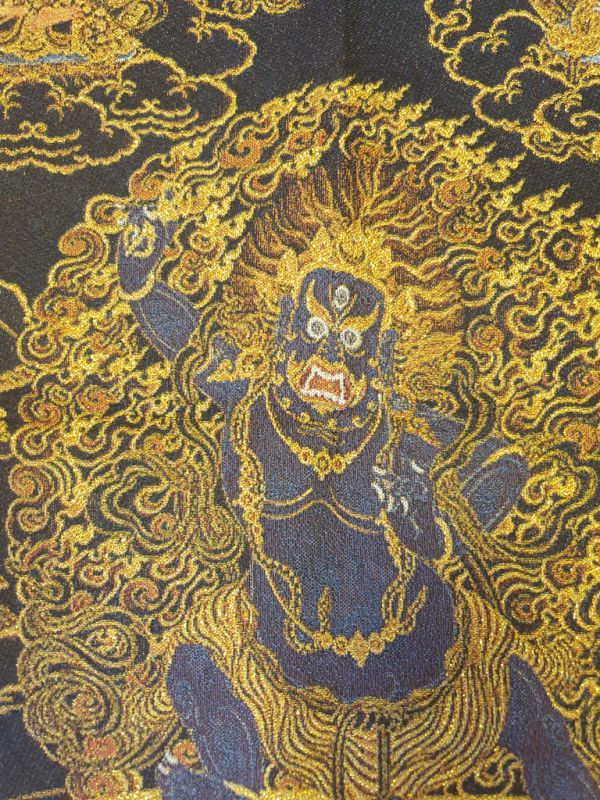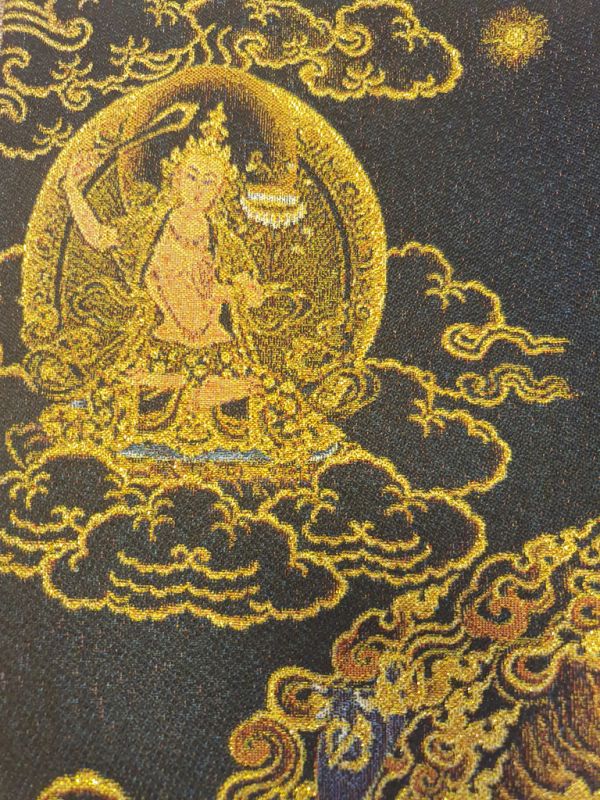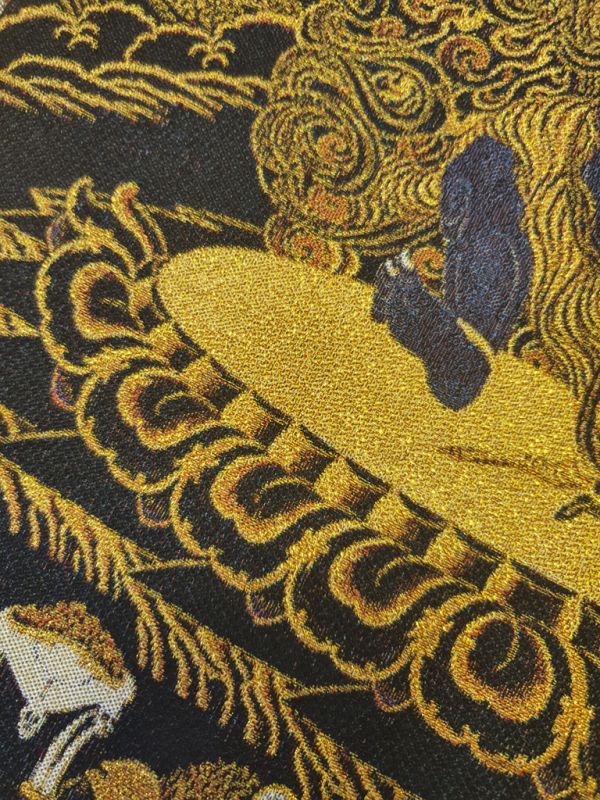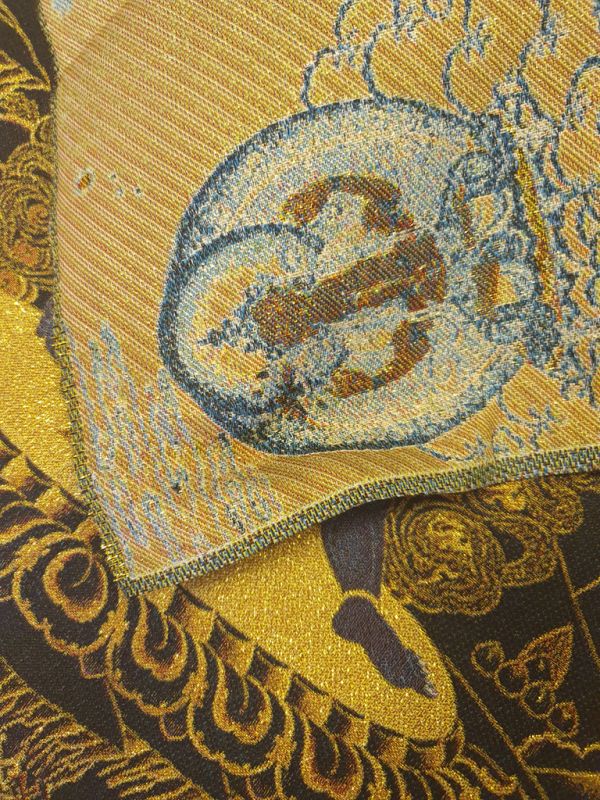Chinese painting - Embroidery on silk - Thangka - Daweide King Kong
- "Painting" carried out in embroidery, embroidery on fabrics, carried out in machine.
- A thangka is a painting, a drawing, or a fabric on canvas originating in India and Tibet and characteristic of Tibetan Buddhist culture.
- The subjects of thangkas are Buddhism.
- They can represent:
* Symbolic mystical diagrams (mandala).
* A bhavacakra, (wheel of karmic existence).
* deities of Tibetan Buddhism or the Bon religion, sometimes related to elements of history.
* Portraits of tulkus or lamas of high rank in the monastic hierarchy.
- The Chinese practice painting with a brush on rice paper, there are also some Chinese paintings on silk, but silk is a very fragile element.
- In order to make a beautiful painting, a Chinese person needs four elements: A paintbrush, paper, an ink stone and ink stick.
- To transform the stick ink into liquid ink, rub the stick on an ink stone and add water (difficult step, because you have to find a good balance between water and powder ink).











